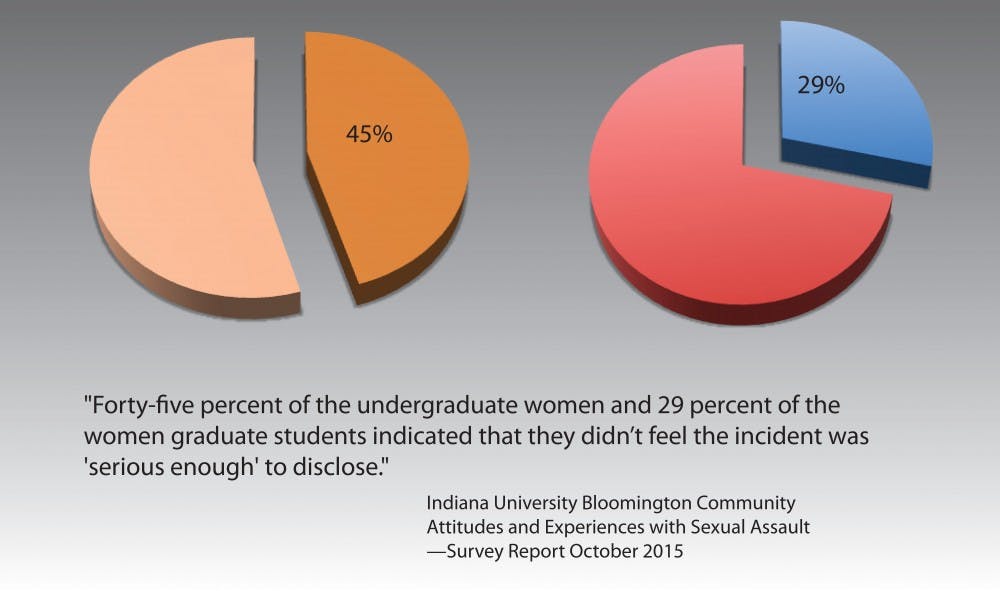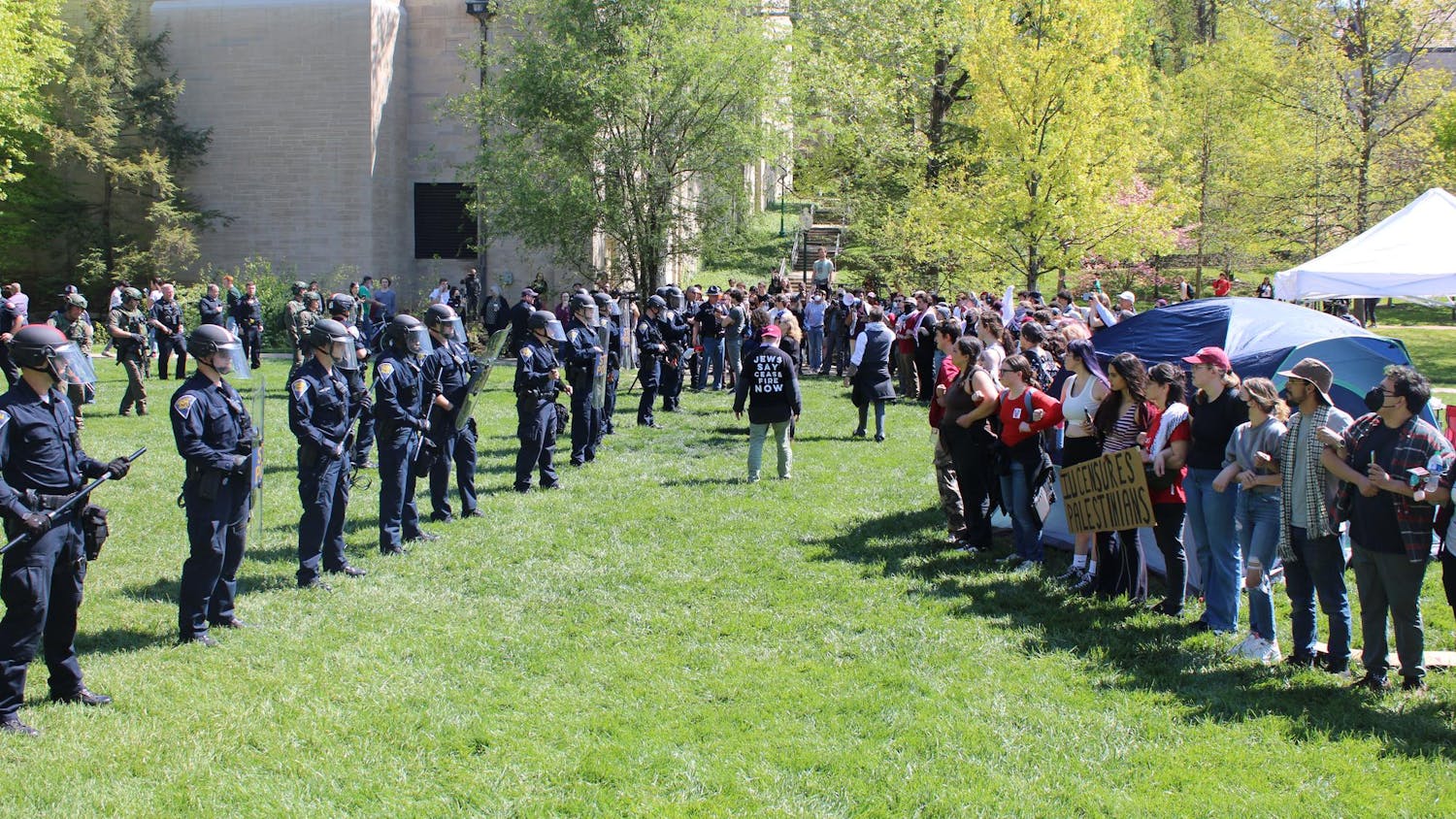It’s a problem that seemingly won’t go away.
Sexual violence — rape, sexual assault, sexual harassment, intimate partner violence, stalking etc. — continues to stubbornly hang around in the IU community, both on and off campus.
The just-released results of a campus-wide survey might be able to help in addressing and solving issues of sexual violence at IU, but they also show just how far we still have to go and how much work remains to be done.
More than 7,100 students, both graduate and undergraduate, participated in the survey, which was distributed via email in November 2014.
In response to the statement “Indiana University does enough to ensure the safety of students,” 32.1 percent of undergraduate women, 28.2 percent of graduate women, 54.4 percent of undergraduate men and 41.2 percent of graduate men said they either strongly agreed or agreed.
Why do so few students, especially women, feel that IU is keeping them safe?
The report and McRobbie’s accompanying letter, available online at stop sexualviolence.iu.edu, come across as somewhat self-congratulatory, as though the administration is patting itself on the back for a job well done.
Meanwhile, more than one third of undergraduate and graduate women report having been sexually harassed while at IU, and 17 percent of undergraduate women report experiencing “attempted or completed nonconsensual sexual penetration.”
To put that into clearer terms, nearly one in five undergraduate women reports having been the victim of an actual or attempted rape while a student at IU.
This is absolutely unacceptable, but it confirms the headlines we see almost every day in the Indiana Daily Student.
Rape and other sexual violence should not be so commonplace that they are no longer breaking news but rather everyday occurrences in our community.
McRobbie’s letter brags “nearly 95 percent of our undergraduate students have participated in some sort of program, event, training or class that deals with sexual assault or gender-related issues.”
We say these programs must not be working, since around half of women responding to the survey and almost 40 percent of men agreed with the statement that IU officials “should do more to protect students from harm.”
The report and accompanying letter also read as though the University is attempting to shift responsibility for campus safety away from IU and onto students and society at large.
Referencing the White House’s “It’s On Us” campaign that seeks to get students involved in preventing sexual violence in colleges and universities, McRobbie writes “fewer than 5 percent” of survey respondents said they thought prevention was “the sole responsibility of the University.”
He also wrote in bold type that many IU students reported experiencing sexual violence “before arriving at IU.”
We say this doesn’t absolve the University of its legal responsibility to keep students safe.
Federal Title IX legislation requires colleges and universities to provide students with a safe learning environment free from “sex discrimination, sexual harassment and sexual violence,” according to knowyourix.org.
IU is obviously doing a pretty awful job of meeting this obligation when 56.3 percent of undergraduate women and 85.8 percent of graduate women say the IU staff either did not help them at all, helped a little or could have helped them more when they reported an instance of sexual violence.
We think it’s pathetic that it took a campus-wide survey to convince McRobbie that sexual violence and students not feeling safe while at IU are real problems.
When almost 30 percent of women say their experiences negatively affected their academic life, the University is failing its students. And IU fails all of us if it fails to appropriately address sexual violence.
We ask then, what exactly does IU plan to do?
Because it’s not on us. It’s on McRobbie and the rest of the IU administration to ensure a safe learning environment for every student.
Federal law agrees: it’s on them.




